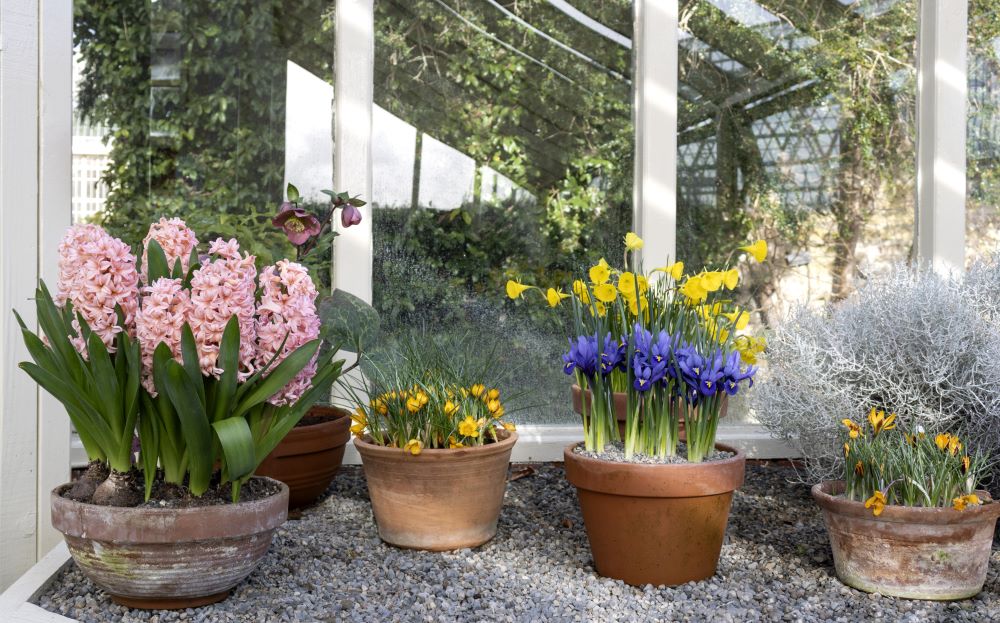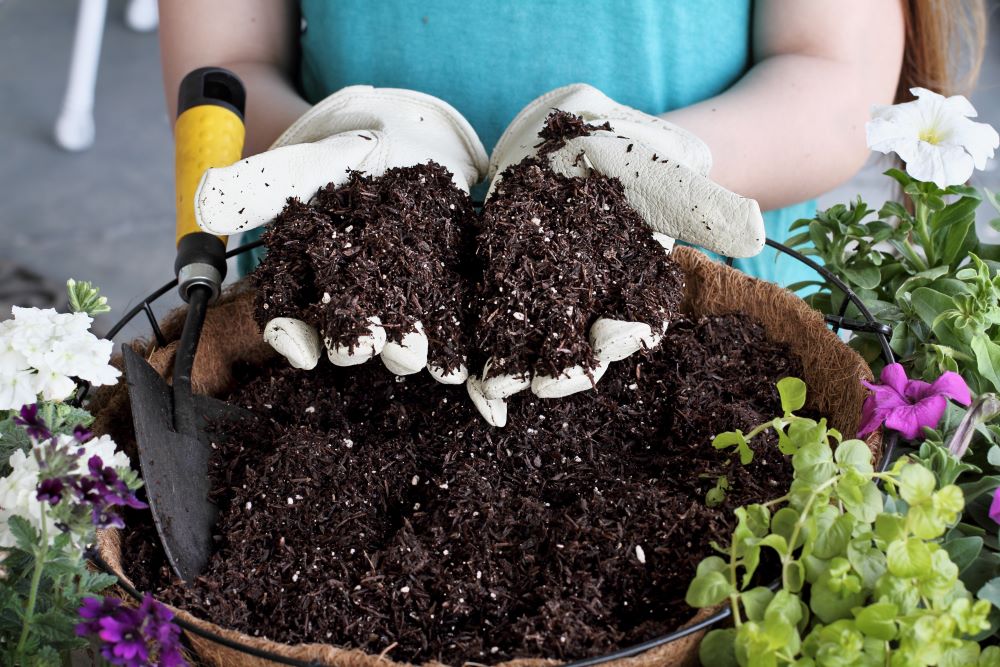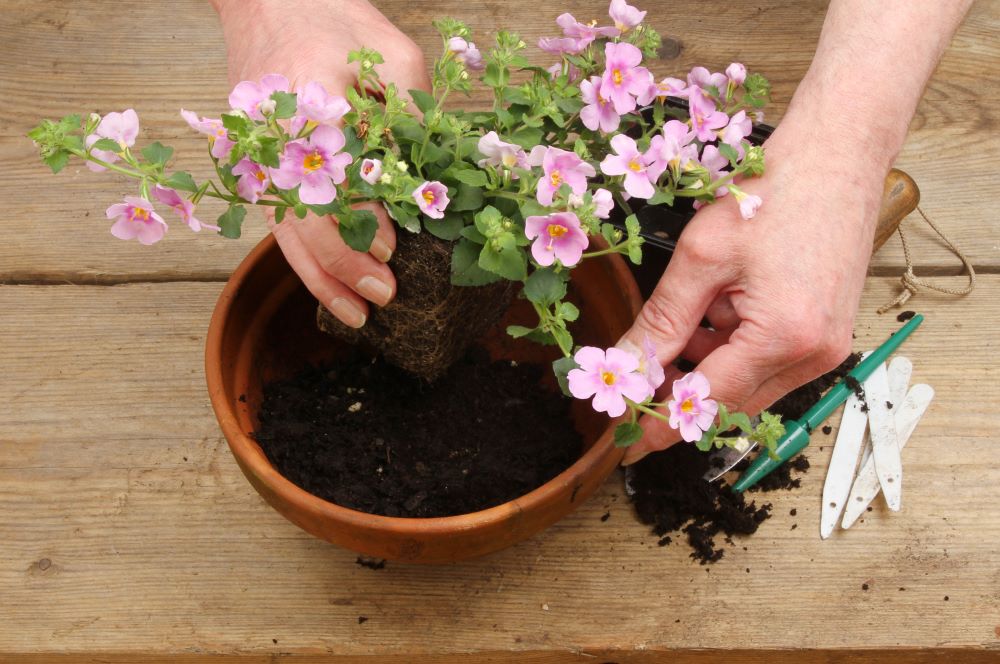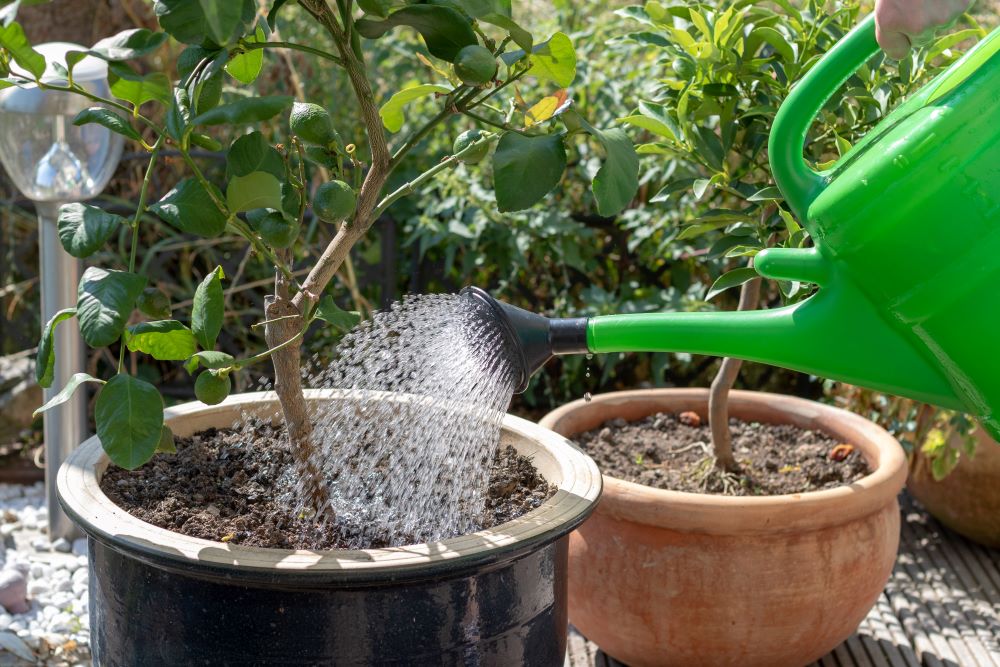How To Plant In Pots & Planters
Pots and planters are typically easier to maintain than planting flowers into the ground, and they can also be a nice addition to your already growing garden. From choosing the right container and soil to planting technique, it’s important to learn proper care and maintenance for your potted plants. To get you started, here are some simple steps on how to plant in pots and planters.
Step 1: Choose Your Pot Or Container

Make sure to carefully choose the types of pots and containers to grow your flowers and plants in. Aside from the decorative appearance of the pot, take into consideration other factors such as size, material, and shape. Note: always choose containers that come with drainage holes, or drill your own if necessary. This prevents flooding and overwatering.
Large containers typically provide the best environment because they can hold more soil than smaller pots, which also helps retain the moisture of the soil for longer. It’s highly important to prevent the soil from drying out completely, so keep large pots and containers in mind to keep your plants as healthy as possible.
You should also think about the material of the pot or container, as different materials will do better in certain environments and situations. Here are some typical materials you’ll find.
Types Of Pots & Planters
- Clay or Terracotta – These types of pots look nice and can work well for planting; however, they can be heavy and be breakable if precautions aren’t taken. If you choose this type, a rolling plant mover can help transport these with ease.
- Polyurethane Foam – These pots look very similar to clay pots but they weigh significantly less and are resistant to breaking.
- Plastic & Fiberglass – These are also a nice choice if you’re going for something lightweight; however, make sure to choose ones that are sturdy enough to hold the soil.
- Wood – Wood planters can look nice and decorative, but you have to be careful of rotting. Choose rot-resistant woods for your planters or use a liner inside of the planter.
- Metal – Take caution with metal planters because they conduct heat, which can cause damage to your plants. These may be a safer to use indoors because they won’t be outside in direct sunlight.
Step 2: Choose Your Potting Soil

Choosing the right soil is important for growing healthy and flourishing plants and flowers. Keep in mind that some types of plants require specific types of soil. For instance, if you are taking care of succulents, you’ll want to refer to the plant’s specific care instructions to understand the type of soil to use.
Make sure to buy potting soil instead of using soil from your yard or garden. Potting soil is looser and has a mixture of important organic ingredients, while the soil from your yard contains insects and diseases that can harm your potted plants.
While your container should have drainage holes, it helps to take extra measures to prevent your soil from getting waterlogged. Consider placing packing peanuts in the bottom half of your pot to assist with water drainage.
Step 3: Plant With Care

You first must make sure to choose flowers and plants that will thrive in pots and containers. Typically, the best flowers for this are annuals or bedding plants; however, many other types can bloom in containers with proper care. Make sure to check on care instructions and proper growing environments for the specific type of flowers you want to plant.
If you are using transplants, decide on the pot arrangement before you start planting. If you’re combining different types of flowers and plants, take into consideration how tall each one will grow and plan accordingly. Fill the pot while making sure there’s a couple of inches between each plant to give them room to grow.
Handle the roots with care and make sure they’re in full contact with the soil. To avoid air pockets, water the plant and afterwards immediately fill in any holes with extra soil.
Step 4: Water Properly & Maintain Soil Levels

Proper care and maintenance is important in keeping your potted plants healthy and happy. To assure that your potted plants grow and flourish, here are the main care tips to follow:
- Water your plant only when needed; don’t over water. You’ll know it’s time to water when the soil is dry 2-3 inches below the surface. Use a watering can or a soft spray nozzle on a hose to water your plants.
- Add more soil to the pot when the soil level gets too low. The soil should always stay about 1-2 inches below the lip of the pot.
- Spread a layer of mulch on top of the soil to help retain moisture.
- Regularly remove dead flowers and clip off branches that are too long.
Shop Garden & Outdoors to find planters, live plants and flowers, garden decor, outdoor furniture, and everything else you need to grow a beautiful garden this spring!






